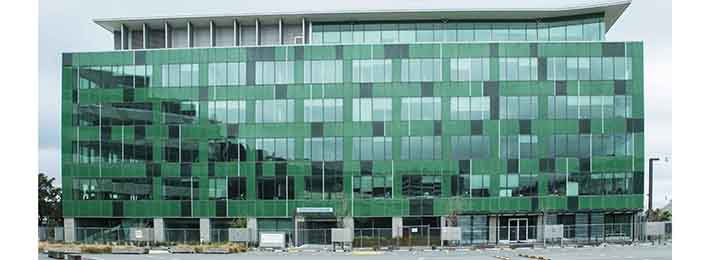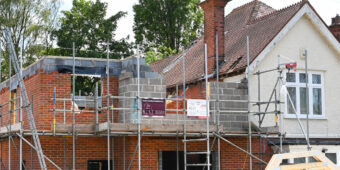Perfect shake caused Stats House failure
07 Apr 2017, Featured, Industry News

An investigation has found that a combination of factors led to the partial collapse of two floors in Wellington’s Statistics House during the November earthquake that devastated Kaikoura
Following the magnitude 7.8 quake, the Ministry of Business, Innovation and Employment commissioned an independent panel to investigate the performance of Statistics House to determine what led to partial floor collapses and assess if the regulatory system was up to scratch.
The panel found at the end of March that the following four factors were the main contributors to the six-storey building’s failure:
- A highly flexible ductile frame with two bays of frame per precast floor span, which effectively doubled the impact of beam elongation due to the plastic hinging; and
- Shortening of the precast double-tee flooring units, as the ends spalled during the earthquake; and
- Amplification of ground shaking, primarily due to basin-edge effects in the Thorndon basin area; and
- The duration of the earthquake.
Specifically the panel concluded that the primary cause of the partial floor collapses was beam elongation in the transverse moment resisting frames that provide the building’s seismic resistance, exacerbated by the multiple bay frame arrangement.
The panel found that the building was designed for the maximum level of ductility allowed under New Zealand’s Building Code (NZBC), which means seismic energy would be dissipated mostly in the hinging of the beams that form part of the moment resisting frames.
Results from modeling and analysis found that there was a shortfall in the capacity of the transverse frames, which the panel says may have been a contributing factor to the partial floor collapses but was not a primary cause.
Otherwise, they found that the building was generally designed and constructed in accordance with NZBC requirements at the time of its construction (2005).
The panel also found that the Kaikoura earthquake generated demands close to or above NZBC design levels, especially for medium-rise buildings in the Wellington region.
The quake’s extended duration and multiple movement cycles were important features that influenced the structural performance of the building.
Key recommendations
The panel made a number of recommendations following its investigation and MBIE has contacted Standards NZ requesting that the committee reviewing Earthquake Actions Standard NZS1170 and Concrete Structures Standard NZS3101 meet to consider the investigation’s findings.
Visit MBIE’s website here.
Register to earn LBP Points Sign in



